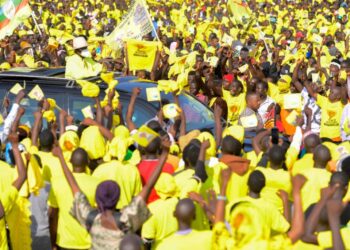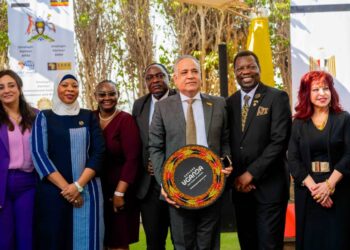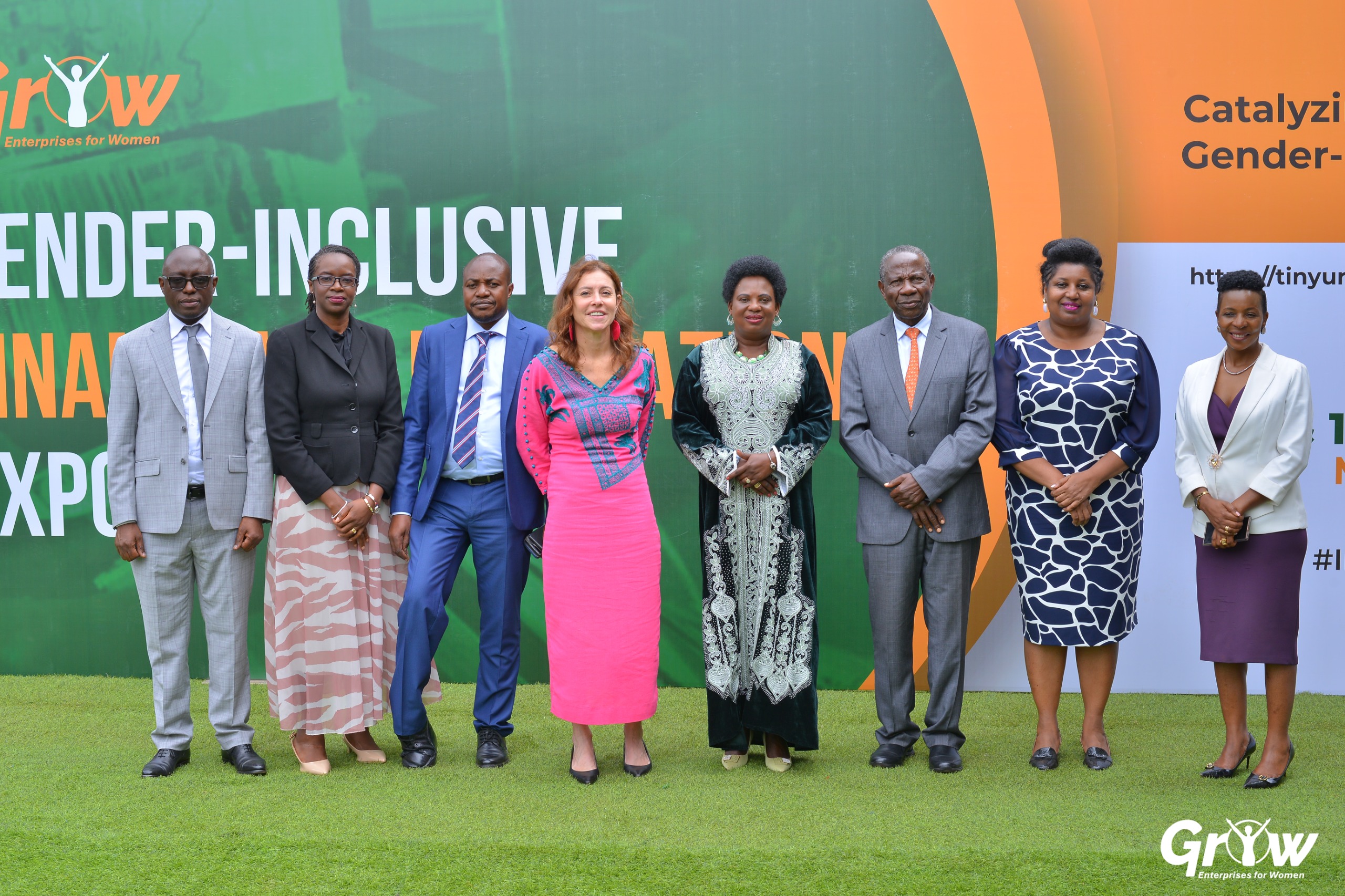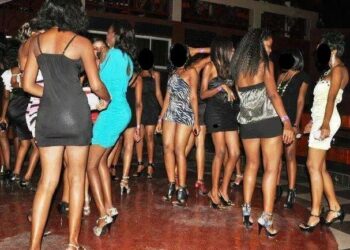President Yoweri Kaguta Museveni on Friday 21st November, 2025, delivered one of his most personal and historically reflective campaign speeches as he held his second-last rally in the Busoga sub-region.
Addressing thousands of supporters who filled the Iganga District Headquarters grounds, President Museveni intertwined wartime memories with an extensive review of the National Resistance Movement (NRM)’s achievements over the last four decades.
He asked Ugandans to judge the party based on what he called its “seven pillars” of contribution to Uganda: peace, development, wealth creation, jobs, education, infrastructure, and social services.
The NRM presidential flagbearer narrated his clandestine operations in Iganga during the 1970s, recalling how he secretly entered the district with 12 machine guns ferried from Tanzania and passed through Kenya before reaching the Iganga railway station. His recollection of hiding the weapons in a small lodge – whose ownership he challenged locals to research- set the pace for his campaign message.
“I thank God because many of these areas were our fighting zones,” President Museveni said.
“In 1971 and 1972, this was a very small place. The town used to start where the police station is, and there were only a few buildings. There was a new lodge on the side of Busesa. I remember arriving with 12 machine guns and storing them in that small lodge while waiting for nightfall to enter Kampala safely,” he further narrated.
The President described how he spent a full day pretending to be a passenger at the car park, boarding a truck to Namasagali simply to avoid arousing suspicion.
“After washing and having breakfast, I locked my room and went to the car park. They were announcing destinations, and I listened for the furthest—Namasagali. I traveled there just to kill time before returning around 5 pm and then proceeding to Kampala at night with my guns,” he recalled.
President Museveni said such memories make his presence in Busoga deeply emotional, especially when he sees residents celebrating peacefully—something he attributed directly to the NRM’s legacy.
“So, when I’m here during the day, enjoying with my people who are celebrating, I thank God,” Candidate Museveni stated, reminding supporters that Uganda’s stability was hard-won.
Gen. Museveni placed peace at the top of NRM’s contributions since 1986. He listed insurgencies such as Alice Lakwena’s Holy Spirit Movement and others that destabilized parts of the country in the late 1980s and early 1990s.
“Even after 1986, there were still wars and instability. But now there is total peace in Uganda. Who has brought that? It is the NRM. Nobody else,” he explained.
He urged supporters to compare Uganda’s past turmoil with today’s peace and security, arguing that peace is the cornerstone upon which the rest of the country’s progress has been built.
The President said the NRM’s second major contribution has been the building of development infrastructure—both economic and social—which he defined in two categories: economic and social development.
President Museveni pointed to several key roads in Busoga and Eastern Uganda that have been constructed or rehabilitated under NRM’s tenure, including the Kampala–Malaba Highway, which he said has been repaired multiple times, Nakalama–Tirinyi–Pallisa–Mbale Road, a significant commercial route, and Iganga–Kaliro Road, which serves major agricultural zones.
He reassured residents that the long-awaited Iganga–Buloopa–Kamuli Road is now fully funded.
“The money is there,” he declared.
On water coverage, President Museveni revealed that Iganga District’s rural safe water coverage now stands at 77%, with 178 out of 231 villages accessing safe water. Only 22.9% of the villages remain without reliable water sources.
The President said that when NRM assumed power, electricity barely extended beyond Mbale.
“The plan then was to extend power to all districts, and that has been achieved across Uganda except Buvuma,” he said.
In Iganga specifically, all 11 sub-counties have been connected to the national grid, though he said two sub-counties still require additional support. The next step, he added, is taking electricity to the parish and village levels.
Regarding schools and education infrastructure, President Museveni gave a detailed assessment of education facilities in Iganga which includes 99 government primary schools in 42 parishes, though 11 still have no government primary school, which he blamed on poor distribution by district officials.
“You have more schools than parishes, yet some parishes do not have a government primary school. Why don’t you start by ensuring each parish gets one before adding more in already-served parishes?” he questioned.
On secondary education, President Museveni noted that Iganga has 9 government secondary schools and more new secondary schools are being constructed, which will leave only one sub-county in Iganga without a government secondary school once complete.
On health infrastructure, President Museveni noted that Iganga has one hospital, one Health Centre IV, ten Health Centre IIIs, while one sub-county still lacks any health facility.
“We plan to upgrade Naibiri Health Centre II to a Health Centre III to close the gap,” he said.
Wealth creation:
The President expressed concern that many Ugandans still confuse development—such as roads, electricity, and infrastructure—with wealth, which he said must be generated at the household level.
He used a familiar Busoga proverb – “Akange kakira akaife” to explain his point.
“The tarmac road is ours, but wealth and poverty are yours personally,” he told the crowd. “You may leave a rally like this one and find poverty waiting for you at home.”
President Museveni said that this misunderstanding is the reason the NRM, as early as the 1996 manifesto, promoted the “4-acre model,” where small landholders allocate one acre to coffee, another to fruits, a third to pasture for dairy, and a fourth to food crops, complemented by backyard enterprises such as poultry, piggery, or fish farming.
He cited success stories from across Uganda to demonstrate the effectiveness of NRM’s approach, and highlighted two model farmers: George Matongo of Nakaseke, who built a profitable dairy enterprise without tarmac roads or electricity, and Johnson Basangwa of Kamuli, who earns approximately 600 million shillings per month from poultry farming and now employs 300 workers.
“These examples show that you can become wealthy even without tarmac or electricity,” the President said. “The medicine we told you in 1996 is correct.”
The President contrasted intensive farming with extensive farming, which involves crops like sugarcane, maize, cotton, tobacco, or large-scale livestock that require vast land.
“Sugarcane can earn you about 3.6 to 4 million shillings per acre per year. But Basangwa earns 7.2 billion shillings a year from poultry on 27 acres,” he noted, underscoring the advantage of high-value, intensive enterprises.
President Museveni defended both the Parish Development Model (PDM) and Operation Wealth Creation (OWC). He said the real challenge is not the programs themselves but the decisions households make with the money.
“You have seen people from Karamoja who rose out of poverty through OWC. The program was across the whole country, but results depend on what individuals choose to do with the support,” he argued.
He emphasized job creation as another major NRM achievement, citing Sino-Mbale Industrial Park, home to 75 factories employing 12,000 people, and Namanve Industrial Park, with 273 factories employing 44,000 people.
“Altogether, the factories are employing 1.3 million Ugandans. The government jobs are 480,000, meaning the factory jobs are three times more than those in the government, and yet the factories are still coming up,” President Museveni stated.
President Museveni also continued to criticize government school administrators for illegally charging fees, arguing that such practices undermine universal education.
“That is why I started skilling hubs,” he explained. “Children are dropping out because of fees, yet after six months of training, they can make shoes, furniture, liquid soap, and clothes, things we were importing.”
He praised the Presidential Skilling hub in Nakabango,Jinja, for transforming young people’s lives. During the rally, he listened to testimonies from youths such as Takwana Edris, who acquired construction skills at the same center, and Sharifa Nakato, who left school in P.6 but later trained in hairdressing and received 10 million shillings to start her own salon. She now employs 10 people.
On the other hand, President Museveni urged NRM supporters to clearly articulate the party’s historical and ongoing contributions when seeking votes.
“You must be clear about these contributions – peace, development, wealth creation, jobs, and the rest,” he said.
“People talk about many things and get disoriented. Tell them the seven contributions. The NRM knows how to diagnose problems and find solutions,” he added.
At the same event, NRM’s First National Vice Chairperson, Alhajji Moses Kigongo, rallied Busoga leaders and supporters to unite behind President Museveni.
“This is the time to ask for votes for President Museveni and all NRM leaders. Unity and discipline will win us overwhelming support,” he said.
The NRM Vice-Chairperson for Eastern Region, Mr. Calvin Echodu thanked President Museveni for completing the Busoga tour and educating the public about NRM’s seven contributions.
“The people of Eastern Uganda have embraced your message,” he said.
First Deputy Prime Minister, Rt. Hon. Rebecca Kadaga welcomed President Museveni and told him that Iganga hospital urgently needs upgrading into a regional referral facility due to the growing population and the hospital’s position along a major highway.
“The NRM candidate is the only one capable of delivering what Busoga needs,” she said, urging residents to vote in big numbers.
Iganga District NRM chairperson, Mr. Walubi Abubakar thanked the President for programs like PDM, detailing how Iganga District has received Shs 12.956 billion, all disbursed to 12,956 households, adding that Iganga Municipality received Shs 3.38 billion, benefiting 3,387 households. In total, 16,343 households have benefited from PDM.
He also listed other government program beneficiaries such as the 5,251 youths under the Youth Livelihood Program, the 709 women under the Women’s Fund, and the 9,849 senior citizens under SAGE.
Mr. Walubi requested President Museveni to help them fix the non-functional X-ray machine at Iganga Hospital and address the idle oxygen plant, which lacks the necessary three-phase electricity. Other demands included fast-tracking legislation to operationalize Busoga University, and supporting the establishment of an industrial park, with potential land available in Nakalama, Butende, and from a private landowner named Mugoya.
The rally attracted prominent national figures, including former Vice President Dr. Specioza Wandira Kazibwe; 3rd Deputy Prime Minister Rukia Nakadama; Minister of General Duties in the Office of the Prime Minister, Hon. Justine Kasule Lumumba; Minister for Presidency, Hon. Babirye Milly Babalanda; and several MPs and NRM flagbearers from Busoga.
Do you have a story in your community or an opinion to share with us: Email us at editorial@watchdoguganda.com














